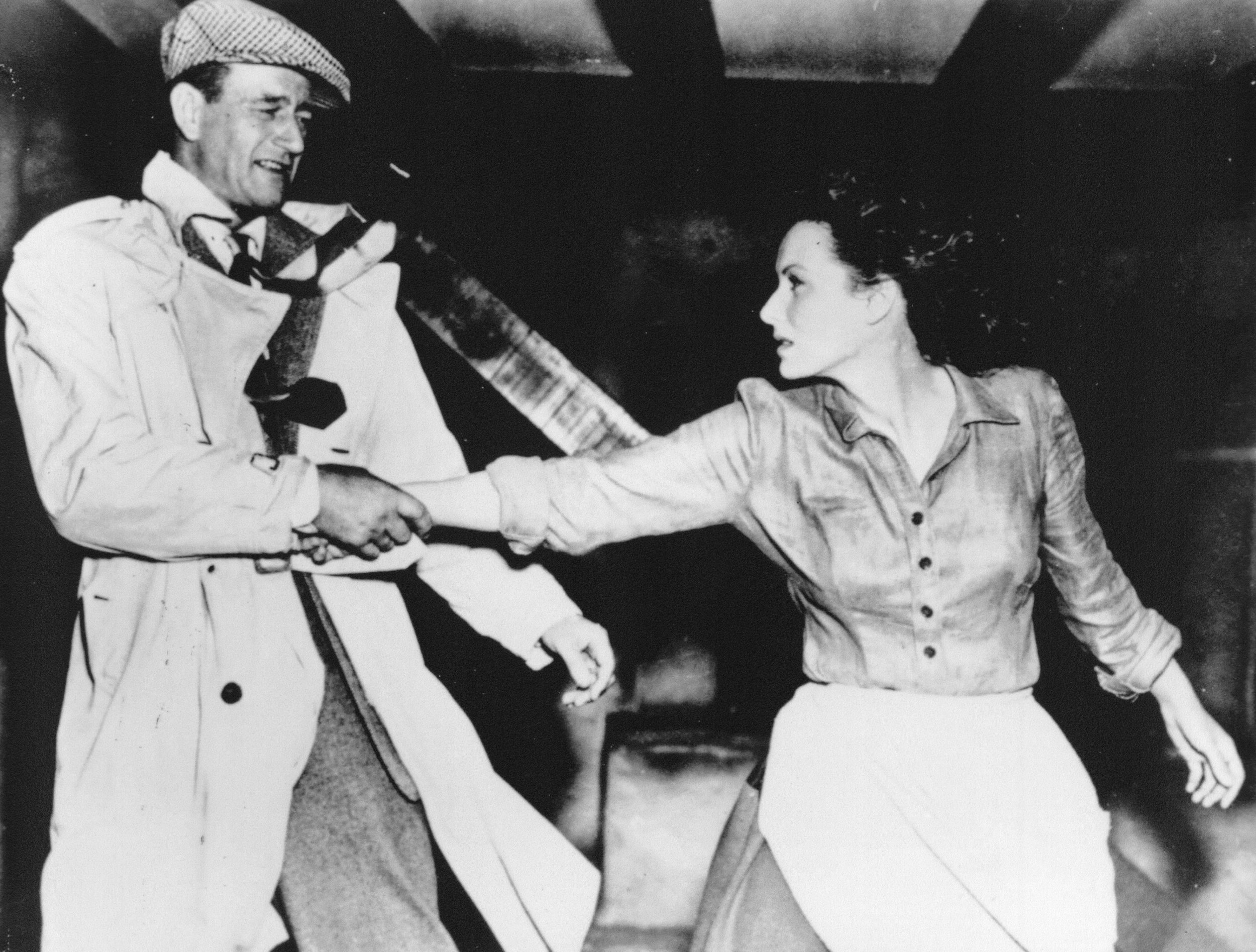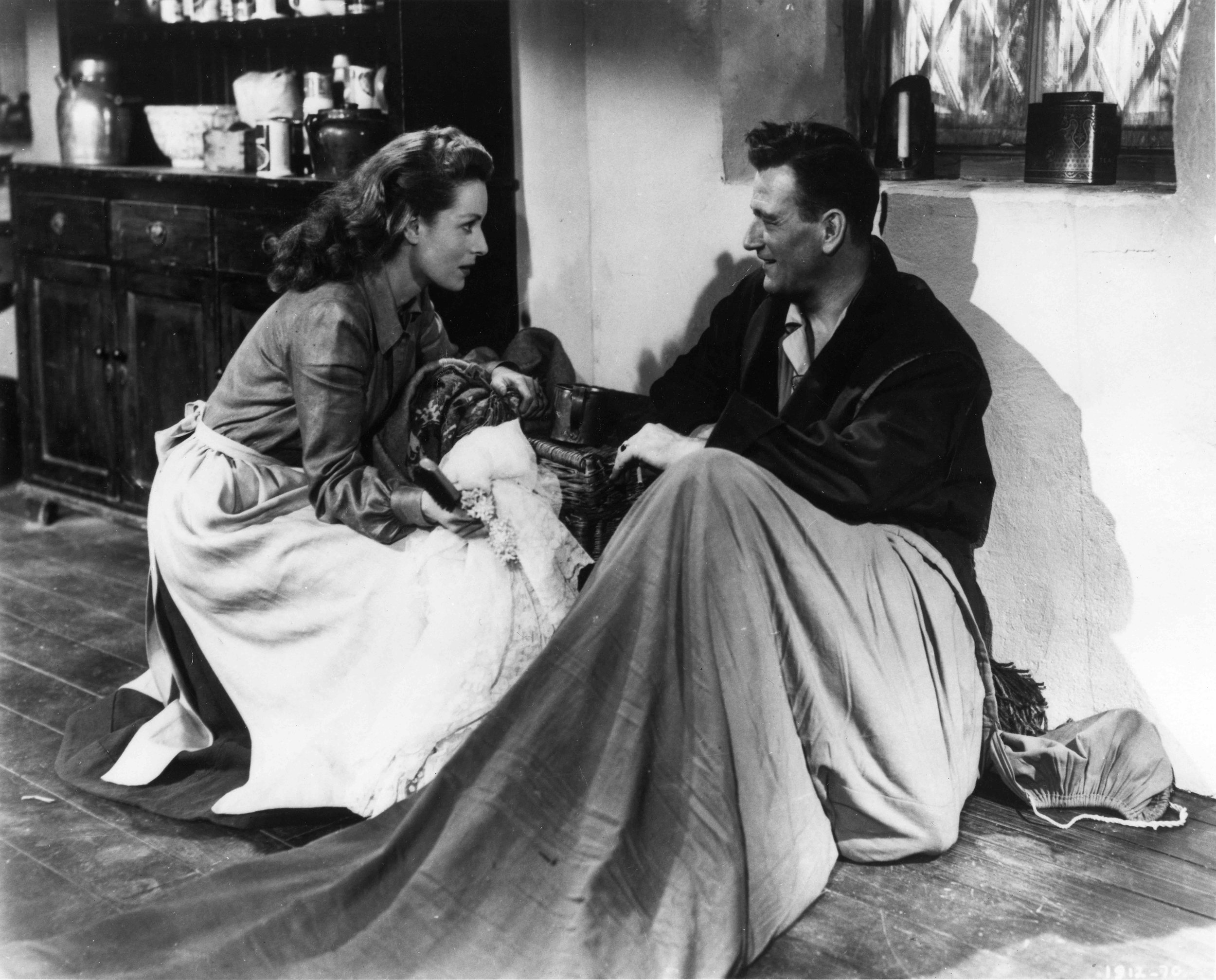John Wayne and Maureen O’Hara in a scene from The Quiet Man (1952), photo courtesy of Republic Pictures
Number 76 on AFI’s list of the 100 greatest love stories, The Quiet Man sizzled with the on-screen chemistry of its stars, who were no more than genuinely good friends.
Written by Jenn Thornton
Released in 1952, The Quiet Man is a classic with a cult following, Academy Awards for Best Cinematography and Best Director, and one of the most iconic cinematic pairs of all time: John Wayne and Maureen O’Hara. Number 76 on AFI’s list of the 100 greatest love stories, The Quiet Man sizzled with the on-screen chemistry of its stars, who were no more than genuinely good friends. Their friendship is well reported, but considering how long and unaffectedly it flourished, perhaps not enough. Duke’s dominant male to O’Hara’s spirited Irish beauty was a match made in celluloid heaven.
O’Hara dedicated several pages of her memoir ‘Tis Herself to the making of The Quiet Man. Of her character Mary Kate Danaher, she wrote, “I loved the hell and fire in her. She was a terrific dame, tough and didn’t let herself get walked on.” How could Wayne’s retired American prizefighter Sean Thornton nottake to Mary Kate? Audiences couldn’t get enough.
One reason: O’Hara was one of the few women to convincingly go toe to toe with her co-star. “I was the only leading lady big enough and tough enough for John Wayne,” she reasoned. “Duke’s presence was so strong that when audiences finally meet a woman of equal hell and fire, it was exciting and thrilling. Other actresses looked as though they would cower and break if Duke raised a hand or even hollered. Not me. I always gave as good as I got, and it was believable.”
This sense of authenticity is a force of Ford’s intensely personal film. The glorious exterior scenes shot on location in Ireland helped to bring the Innisfree of Ford’s imagination to life. And life it is—the film is one iconic moment after another, perhaps none more so than the scene in the windswept cottage, where Sean kisses Mary Kate, she kisses him back, then slaps him senseless—a scene that Steven Spielberg reimagined in E.T. the Extra-Terrestrial, but far more romantically than what occurred on Ford’s set.
“Now let me tell you about that slap,” wrote O’Hara, as if channeling Mary Kate herself. “That day on the set, I was mad as hell at Duke and Mr. Ford for something they had done earlier in the day. My plan was to sock Duke in the jaw and really let him have it.” In shielding himself, O’Hara recalled, the actress hurt her hand, which she tried to hide in her petticoat. But “Duke came over and said, ‘Let me see that hand. You nearly broke my jaw.’ ” So much for the delicate Irish rose.
“Fire and hell,” tough and tender, Duke and O’Hara—the many tensions of The Quiet Man make the film a lasting tribute to these best of friends.
Maureen O’Hara in a scene from The Quiet Man (1952), photo courtesy of Republic Pictures




